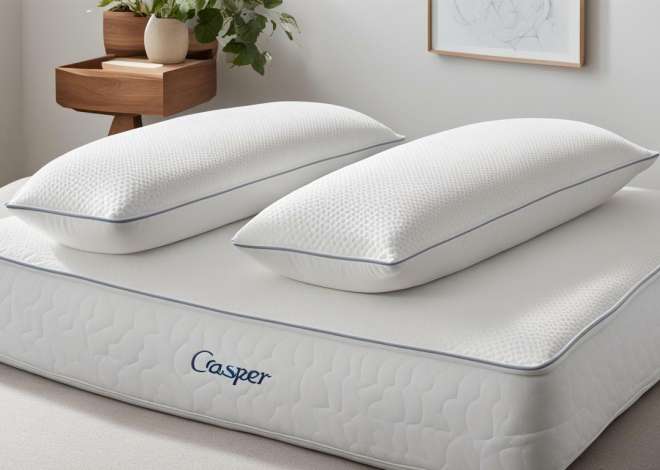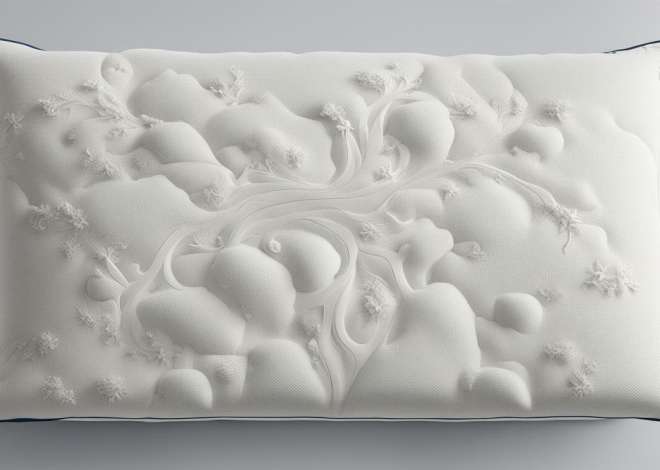
What material should be my pillowcase from?
Choosing the right material for your pillowcase is an important decision that affects not only the quality of your sleep but also your hair and skin health. With so many options on the market, the task can be daunting. In this article, we explore the different types of pillowcase materials available and help you make an informed decision.
The importance of choosing the right pillowcase material
Before we dive into the different types of materials available, it’s important to understand why choosing the right pillowcase material is essential. Your pillowcase is in constant contact with your skin and hair, and the wrong material can cause irritation and breakouts. Moreover, some materials can cause hair damage, leading to split ends and frizz. Choosing the right material can also impact your quality of sleep, ensuring a comfortable and restful night’s rest.
When it comes to choosing the right pillowcase material, it’s important to consider your personal preferences and needs. For example, if you have sensitive skin, you may want to opt for a hypoallergenic material like bamboo or silk. If you tend to get hot at night, a breathable material like cotton or linen may be a better choice. Additionally, some materials are more durable and long-lasting than others, which can save you money in the long run. Ultimately, taking the time to research and choose the right pillowcase material can have a significant impact on your overall health and well-being.
The benefits of natural materials for pillowcases
Natural materials such as cotton, silk, and linen are popular choices for pillowcases. Cotton is a breathable fabric that is hypoallergenic, making it an excellent choice for people with sensitive skin. Silk is a luxurious material that is gentle on hair and skin, reducing the risk of hair breakage and wrinkles. Linen is a light and durable fabric that is perfect for warm climates, providing a comfortable and cool sleeping environment. Natural materials are also eco-friendly, making them a sustainable choice for the environmentally conscious.
In addition to their comfort and sustainability benefits, natural materials for pillowcases also have a positive impact on sleep quality. These materials are known for their moisture-wicking properties, which help to regulate body temperature and prevent overheating during the night. This can lead to a more restful and uninterrupted sleep, allowing you to wake up feeling refreshed and energized. Furthermore, natural materials are often softer and more comfortable than synthetic alternatives, providing a cozy and luxurious sleeping experience.
Synthetic materials for pillowcases: Pros and cons
Synthetic materials such as polyester, microfiber, and rayon are also popular choices. They are often more affordable than natural materials and require less maintenance. However, synthetic materials may not be as breathable as natural materials, leading to a hot and uncomfortable sleeping environment. They may also cause static, leading to hair breakage and frizz. Moreover, synthetic materials are not as eco-friendly as natural materials, making them a less sustainable choice.
Despite the cons, synthetic materials do have some advantages. They are often more durable than natural materials, making them a good choice for those who want their pillowcases to last longer. Additionally, synthetic materials are often hypoallergenic, making them a good choice for people with allergies or sensitive skin. However, it is important to note that not all synthetic materials are created equal, and some may still cause skin irritation or other allergic reactions.
How to choose the best pillowcase material for your skin type
Choosing the right pillowcase material for your skin type is essential to prevent irritation and breakouts. If you have sensitive skin, natural materials such as cotton and silk are the best choice. They are hypoallergenic and gentle on the skin, reducing the risk of irritation. If you have oily skin, consider materials that are easy to wash, such as microfiber. If you have dry skin, choose a material that is soft and gentle, such as satin.
It’s also important to consider the thread count of the pillowcase material. A higher thread count means a tighter weave, which can help prevent dirt and oil from penetrating the fabric and clogging your pores. However, a higher thread count can also mean a higher price point. If you’re on a budget, look for a pillowcase with a thread count of at least 200, which should provide a good balance of quality and affordability.
The impact of pillowcase material on hair health
The material of your pillowcase can also impact your hair health. Natural materials such as silk and satin are gentle on hair, reducing the risk of hair breakage, and frizz. Synthetic materials may cause static, leading to hair damage. Additionally, choosing a material that doesn’t absorb moisture can help prevent dry and damaged hair.
It is also important to consider the color of your pillowcase. Dark-colored pillowcases may cause hair dye to bleed, leading to discoloration and damage to your hair. Light-colored pillowcases are a safer option, especially if you have recently dyed your hair.
Environmental considerations when choosing a pillowcase material
Choosing a pillowcase material that is eco-friendly is essential for the environmentally conscious. Natural materials such as cotton and linen are the best choice, as they are produced sustainably without the use of harmful chemicals. Choosing materials that are biodegradable and recyclable can also help reduce your environmental impact.
Another important consideration when choosing an eco-friendly pillowcase material is the production process. Look for materials that are produced using renewable energy sources, such as wind or solar power. Additionally, consider purchasing pillowcases from companies that prioritize sustainable and ethical practices throughout their supply chain, from sourcing materials to manufacturing and shipping.
Luxury pillowcase materials and their benefits
If you’re looking for a luxurious pillowcase, consider materials such as silk and cashmere. Silk is a soft and gentle material that is perfect for individuals looking for a luxurious and comfortable sleeping experience. Cashmere is a warm and soft material that provides optimal comfort and can be used year-round.
Another material to consider for a luxury pillowcase is Egyptian cotton. This type of cotton is known for its long fibers, which make it incredibly soft and durable. It also has a high thread count, which means it feels smooth and silky against your skin. Egyptian cotton pillowcases are perfect for those who want a luxurious feel without the high maintenance of silk or cashmere.
Pillowcase maintenance: How to care for different materials
The maintenance of your pillowcase is important to ensure its longevity and effectiveness. Different materials require different care instructions. Natural materials such as cotton and linen should be washed in cold water and dried on low heat. Silk should be washed by hand or on a delicate cycle and air-dried. Synthetic materials such as polyester and microfiber can be washed in warm water and dried on low heat. Always check the care instructions before washing your pillowcase to avoid damage.
In addition to washing and drying, there are other ways to maintain your pillowcase. It is recommended to change your pillowcase every 1-2 weeks to prevent the buildup of dirt, oil, and bacteria. You can also use a pillow protector to further protect your pillowcase from stains and spills. If you have sensitive skin or allergies, consider using hypoallergenic pillowcases made from natural materials such as bamboo or organic cotton. By following these tips, you can ensure that your pillowcase stays clean, comfortable, and in good condition for a long time.
Conclusion: Making an informed decision on your pillowcase material
Choosing the right pillowcase material is essential for a comfortable and restful night’s sleep. Natural materials such as cotton and silk are gentle on hair and skin, while synthetic materials offer affordability and convenience. When choosing your pillowcase, consider your skin type, hair health, and environmental impact. By making an informed decision, you can ensure a comfortable and sustainable sleeping experience.


